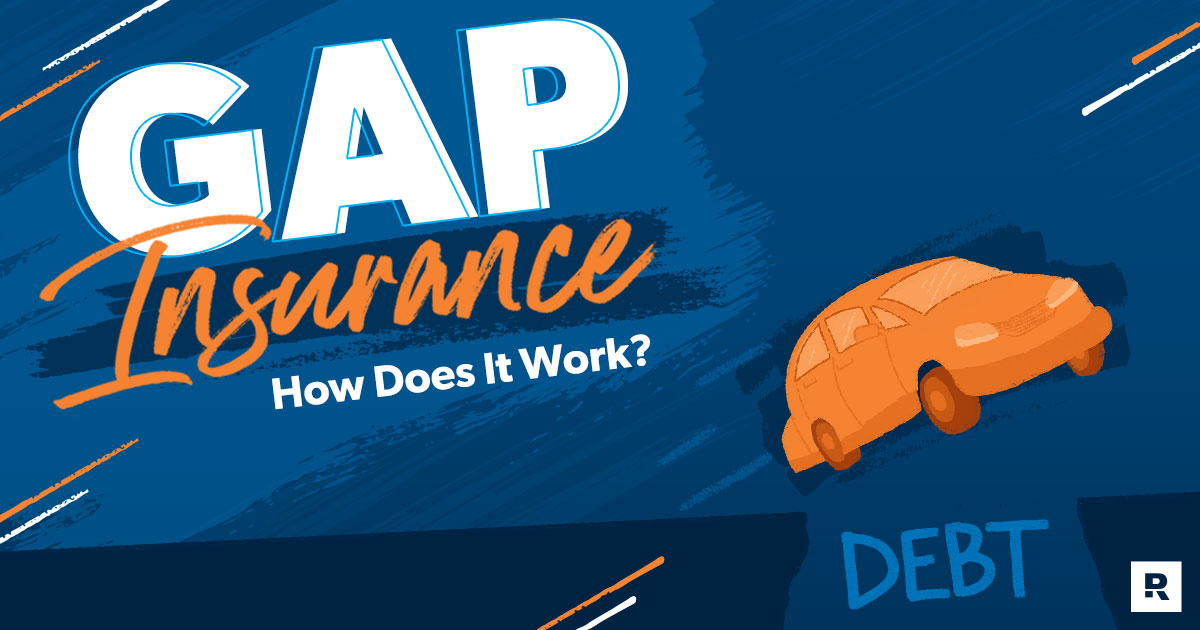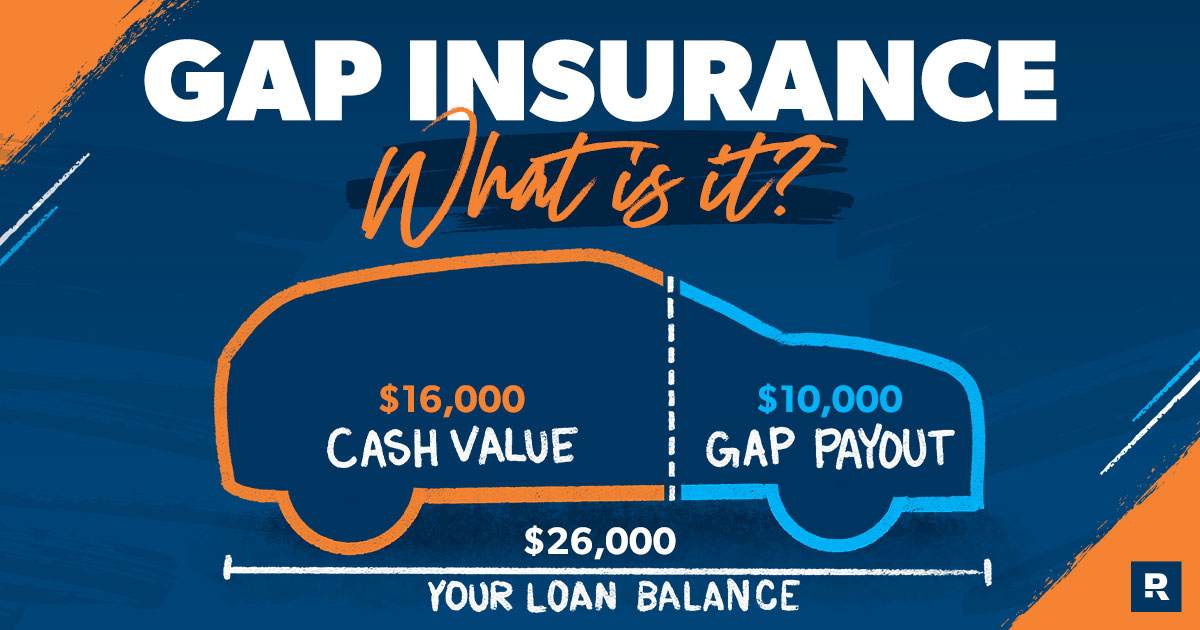What does gap insurance cover? It’s a question many car owners ask, especially those with financed vehicles. Gap insurance, in simple terms, bridges the financial gap between your car’s actual value and the outstanding loan amount in the unfortunate event of a total loss or theft.
Imagine you’re driving a car that you financed for $25,000. Unfortunately, you get into an accident that totals your car. If your car’s market value is only $15,000, you’re left with a $10,000 shortfall. This is where gap insurance comes in, covering that difference and ensuring you’re not left with a hefty debt.
What is Gap Insurance?
Gap insurance is a type of insurance that helps cover the difference between what you owe on your car loan and what your car is worth in the event of a total loss.
Gap insurance is designed to protect you from financial loss if your car is totaled in an accident or stolen and your insurance payout is less than the amount you still owe on your loan.
An Example Scenario Where Gap Insurance Would Be Beneficial, What does gap insurance cover
Imagine you bought a new car for $30,000 and financed it for five years. After two years, you’re still paying off the loan, and you owe $15,000. Unfortunately, you get into a serious accident and your car is totaled. Your insurance company determines the actual cash value of your car is only $10,000. Without gap insurance, you would be left with a $5,000 gap between the insurance payout and your remaining loan balance.
Gap insurance would cover that $5,000 difference, so you wouldn’t have to pay it out of pocket.
How Does Gap Insurance Work?: What Does Gap Insurance Cover
Gap insurance bridges the difference between what your car is worth and what you owe on your loan. It protects you from financial hardship if your car is totaled or stolen and you still owe more than the vehicle’s actual cash value.
Calculating the Gap
To determine the gap, your insurance company will calculate the actual cash value (ACV) of your vehicle. The ACV is the market value of your car, taking into account its age, mileage, condition, and other factors. They will then subtract the ACV from the outstanding loan balance. The difference is the gap. For example, if your car is worth $10,000, but you owe $15,000 on your loan, the gap is $5,000.
Gap Insurance Coverage
In the event of a total loss or theft, gap insurance will cover the difference between the ACV and the outstanding loan amount. This means you won’t have to pay the remaining balance out of pocket.
Coverage Periods and Limitations
Gap insurance policies typically cover the duration of your loan. However, there are some limitations. For example, most policies have a maximum coverage amount, and some may exclude certain types of vehicles, such as leased vehicles. Additionally, some policies may require you to have comprehensive and collision coverage on your car.
What Does Gap Insurance Cover?
Gap insurance is designed to cover the difference between what your car insurance pays out after an accident or theft and the amount you still owe on your car loan or lease. This type of insurance can be particularly beneficial if you have a new car or one with a high loan balance.
Gap Insurance Coverage
Gap insurance covers the difference between the actual cash value (ACV) of your vehicle and the amount you still owe on your auto loan or lease. The ACV is the market value of your car, which depreciates over time. This means that your car insurance might not cover the full amount of your loan or lease if your vehicle is totaled in an accident or stolen.
Here’s a breakdown of the specific situations covered by gap insurance:
| Coverage Type | Description | Examples | Exclusions |
|---|---|---|---|
| Total Loss Accident | If your car is totaled in an accident, gap insurance covers the difference between the ACV and the outstanding loan balance. | You owe $25,000 on your car loan, but the ACV of the vehicle is only $18,000 after an accident. Gap insurance would cover the $7,000 difference. | Gap insurance does not cover the cost of repairs for a damaged vehicle that is not totaled. |
| Theft | If your car is stolen and not recovered, gap insurance covers the difference between the ACV and the outstanding loan balance. | You owe $30,000 on your car loan, but the ACV of the vehicle is only $20,000 after it’s stolen. Gap insurance would cover the $10,000 difference. | Gap insurance does not cover the cost of replacing stolen personal belongings from your car. |
| Total Loss Due to Natural Disaster | If your car is totaled due to a natural disaster, such as a flood or earthquake, gap insurance covers the difference between the ACV and the outstanding loan balance. | You owe $28,000 on your car loan, but the ACV of the vehicle is only $15,000 after a flood. Gap insurance would cover the $13,000 difference. | Gap insurance does not cover damage to your car caused by a natural disaster that is not a total loss. |
Alternatives to Gap Insurance?
Gap insurance isn’t the only way to protect yourself from potential financial losses if your vehicle is totaled. Several alternatives can help bridge the gap between the vehicle’s value and the outstanding loan amount. These options can be more suitable depending on your specific situation and financial circumstances.
Alternatives to Gap Insurance
While gap insurance offers a straightforward solution, there are alternative approaches to consider. These alternatives might not provide the same comprehensive coverage as gap insurance, but they can offer some protection and potentially save you money.
- Increased Down Payment: A larger down payment can significantly reduce the loan amount and, consequently, the gap between the vehicle’s value and what you owe. This strategy reduces the potential financial burden if your car is totaled. However, it requires a larger initial investment, which might not be feasible for everyone.
- Shorter Loan Term: A shorter loan term means you pay off the loan faster, reducing the principal amount owed. This minimizes the gap between the vehicle’s value and your loan balance. However, shorter loan terms usually come with higher monthly payments, which can strain your budget.
- Negotiating a Lower Interest Rate: A lower interest rate can lead to lower overall borrowing costs, reducing the total loan amount. This can help minimize the potential gap between the vehicle’s value and what you owe. However, securing a lower interest rate depends on your credit score and the prevailing market conditions.
- Saving for a Contingency Fund: Building a dedicated savings account for unexpected expenses like vehicle repairs or replacements can provide a financial cushion in case of a total loss. While this requires discipline and consistent savings, it offers flexibility and control over your finances.
Gap Insurance and Vehicle Depreciation?

Gap insurance plays a crucial role in mitigating financial losses related to vehicle depreciation, which is the decline in a car’s value over time. Understanding the relationship between these two factors is essential for making informed decisions about car insurance.
Vehicle Depreciation and Gap Insurance
Depreciation is an inevitable part of owning a vehicle. As a car ages and accumulates mileage, its value gradually decreases. This depreciation can significantly impact the amount your insurance company pays out in the event of a total loss. Gap insurance bridges the gap between the actual cash value (ACV) of your car and the amount you still owe on your loan or lease.
The Impact of Depreciation on Gap Insurance
Depreciation can significantly affect your need for gap insurance. If your vehicle depreciates quickly, the ACV may be significantly lower than your outstanding loan balance. In this scenario, gap insurance becomes more valuable because it covers the difference, preventing you from being stuck with a substantial debt even after your car is totaled.
For example, if you finance a $30,000 car and it depreciates to $15,000 within a few years, your insurance company would only pay $15,000 in the event of a total loss. Gap insurance would cover the remaining $15,000, ensuring you are not left with a substantial debt.
Managing Gap Insurance as a Vehicle Depreciates
As your car depreciates, you should review your need for gap insurance. Here are some considerations:
- Loan Term: As your loan term progresses, the outstanding balance decreases, making gap insurance less necessary.
- Vehicle Age: Older vehicles depreciate faster, making gap insurance more valuable in the early years of ownership.
- Vehicle Condition: A well-maintained vehicle depreciates slower, reducing the need for gap insurance.
Gap Insurance and Total Loss Situations

Gap insurance is particularly valuable in situations where your vehicle is deemed a total loss, meaning the cost to repair it exceeds its actual cash value (ACV). This is because the insurance payout based on ACV might not cover the outstanding loan balance, leaving you with a significant financial burden.
How Gap Insurance Helps in Total Loss Events
Gap insurance bridges the gap between the ACV of your vehicle and the outstanding loan balance. It provides additional coverage to pay the difference, protecting you from potential financial hardship in the event of a total loss.
Examples of Gap Insurance Protection
Imagine you financed a new car for $30,000 and, after two years, it’s involved in an accident and declared a total loss. Your insurance company determines the ACV to be $20,000. Without gap insurance, you would be responsible for the remaining $10,000 loan balance. However, if you had gap insurance, it would cover this $10,000 difference, ensuring you’re not left with a substantial debt.
Gap insurance is a valuable tool for protecting yourself financially in the event of a total loss. It can help you avoid unexpected debt and ensure a smoother recovery process.
Ultimate Conclusion
Understanding the intricacies of gap insurance can empower you to make informed decisions about your car insurance. By weighing the pros and cons, considering your specific needs, and exploring alternative options, you can choose the best protection for your financial well-being and peace of mind.
Gap insurance helps bridge the difference between what your car is worth and what you owe on it if it’s totaled. While it’s a separate policy, it’s often a good idea to consider it in conjunction with home and auto insurance bundles to ensure comprehensive coverage for your financial protection.
